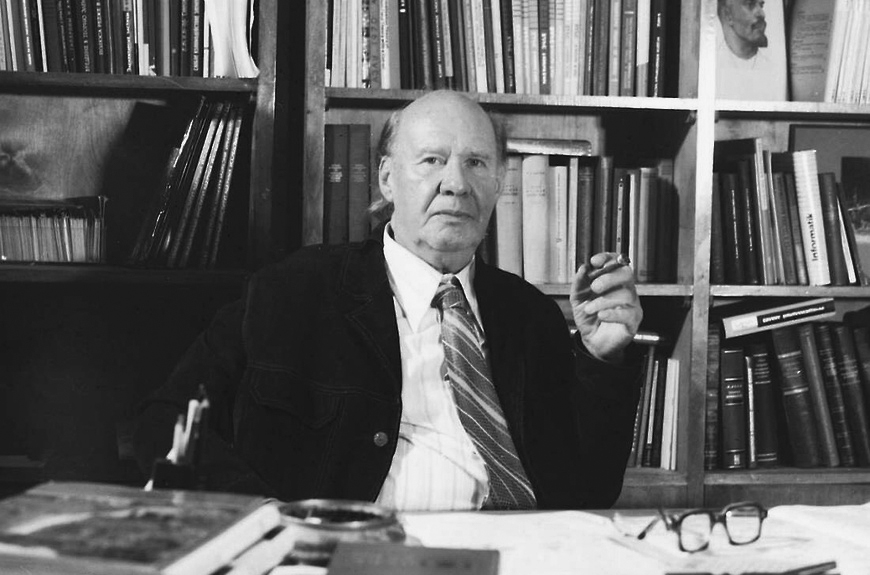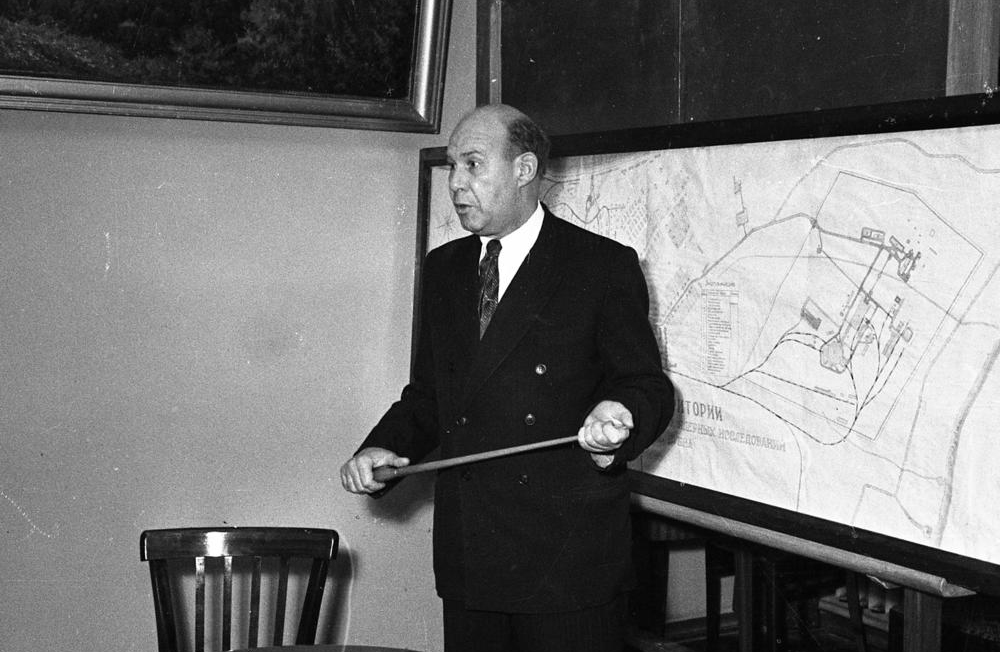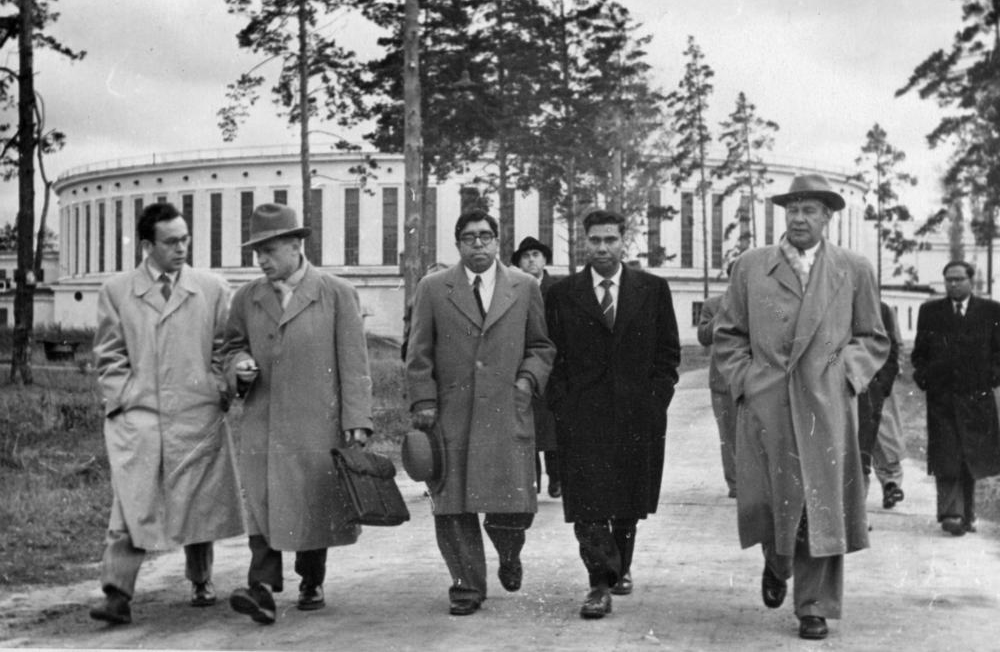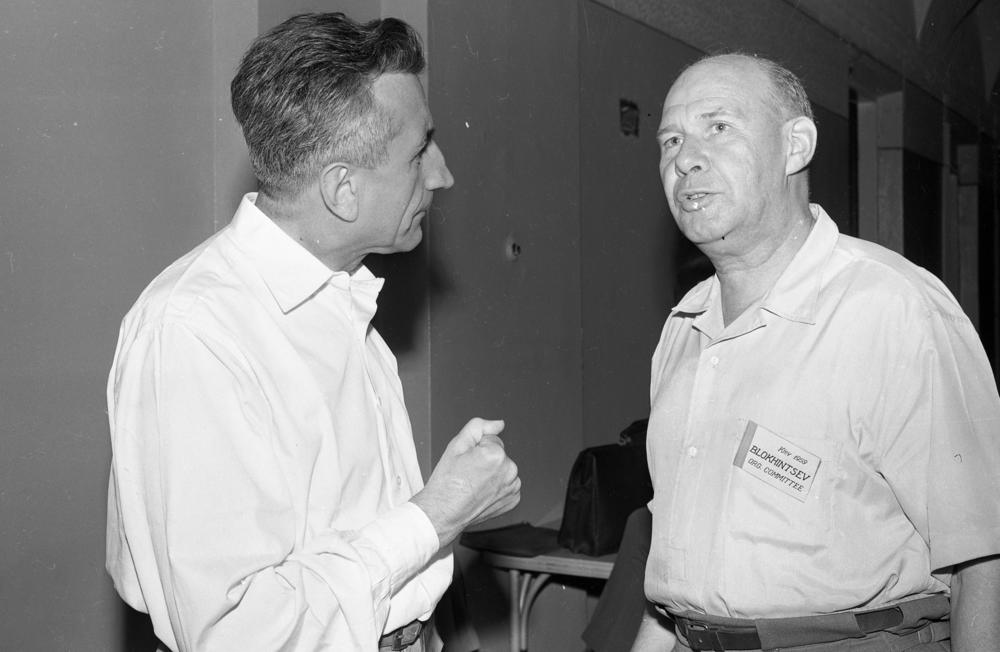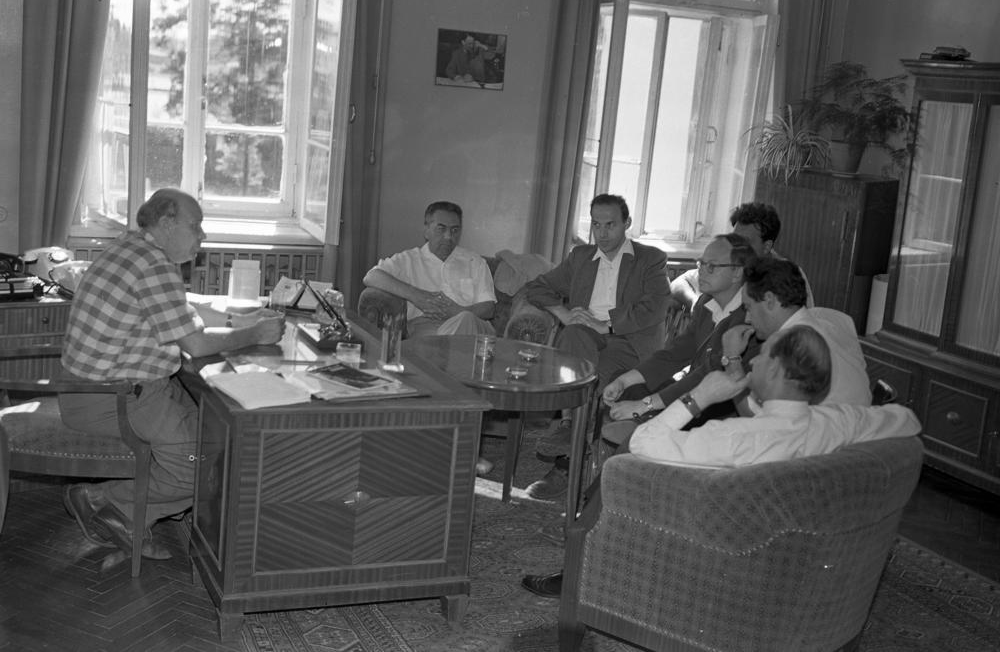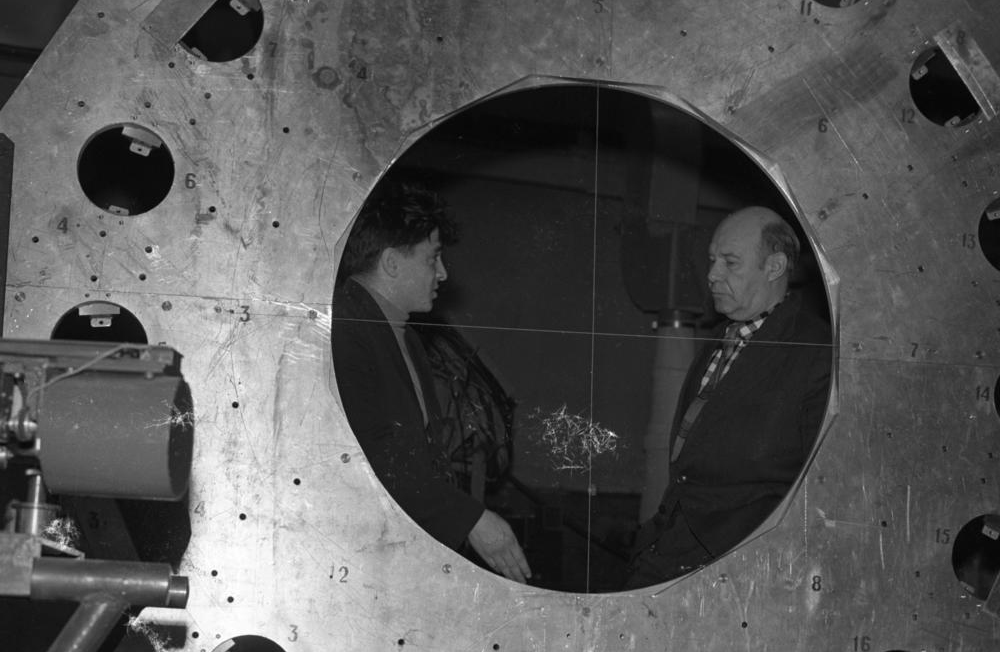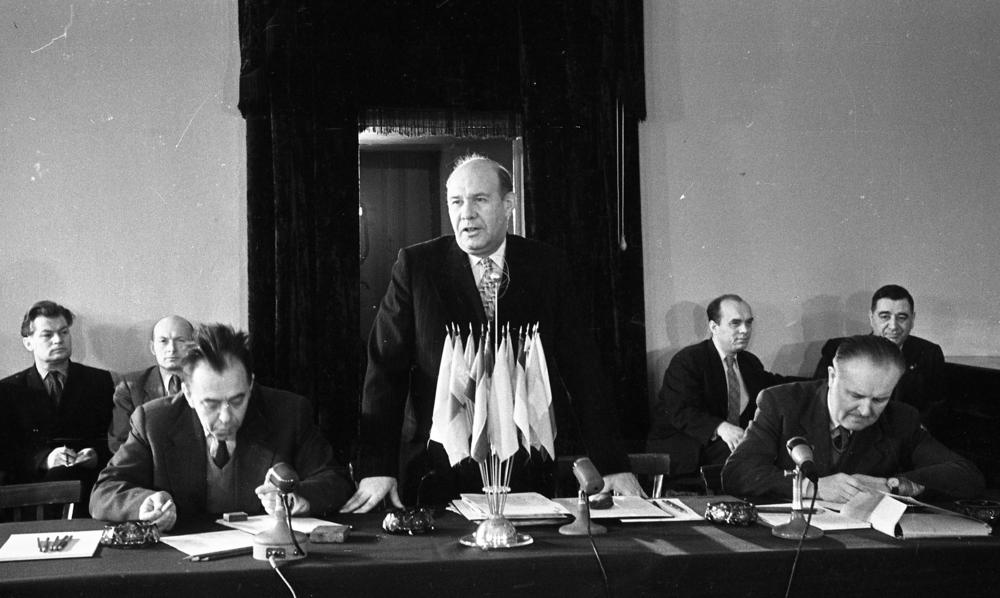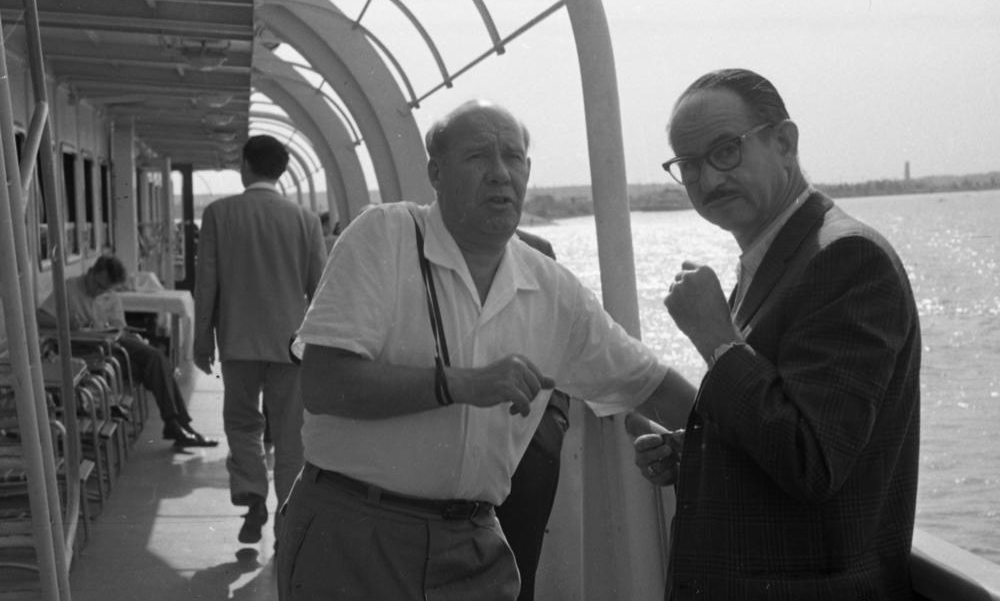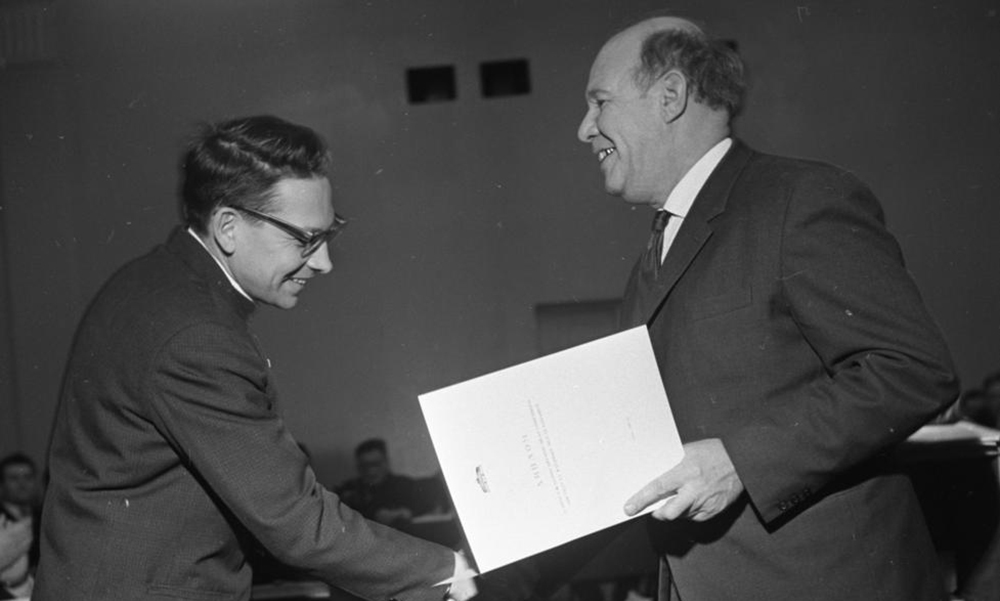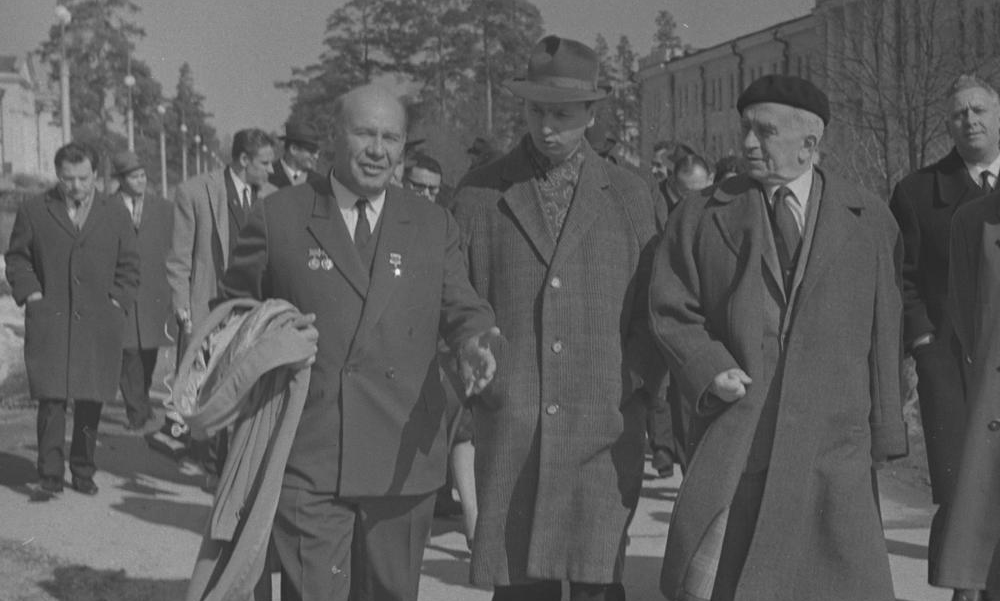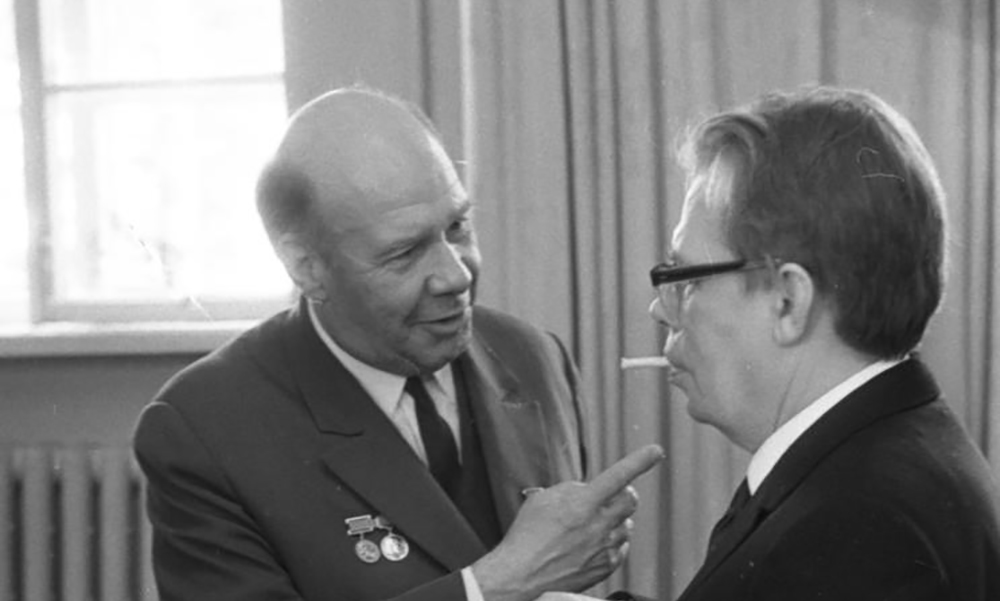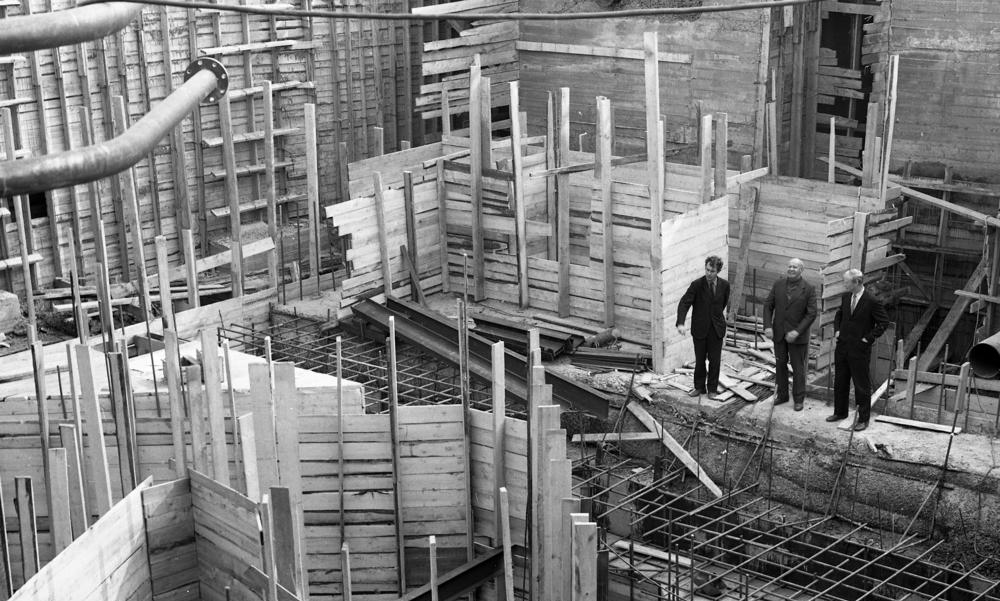Founding fathers: Dmitry Blokhintsev
News, 11 January 2023
11 January marks the 115th anniversary of the birth of an outstanding Soviet physicist Dmitry Ivanovich Blokhintsev (1908 – 1979), one of the initiators of the establishment of the Joint Institute for Nuclear Research and its first Director.
Dmitry Ivanovich Blokhintsev was born on 11 January 1908 in Moscow. Since childhood, he was fond of aircraft and rocket engineering; as a teenager, he was able to create construction blueprints, corresponded with Konstantin Tsiolkovsky, and mastered the basics of differentiation and integration on his own.
After graduating from the Faculty of Physics of Moscow State University in 1930, he taught there. Since 1936, he was a Professor and then the Head of the Department of Theoretical Nuclear Physics. In 1934, Dmitry Blokhintsev defended his candidate’s dissertation on the quantum theory of solid body. A year later, according to the results of the defence, he was awarded the degree of Doctor of Physics and Mathematics.
It is difficult to overestimate the contribution of Dmitry Blokhintsev to the field of science organization. He was one of the founders of the Department of Nuclear Physics of the MSU Faculty of Physics and Dubna branch of MSU. In 1935 – 1947, he worked at the Physical Institute of the USSR Academy of Sciences (FIAN). Since 1947, he was the Director of the scientific and research laboratory in Obninsk, which was then transformed into the Institute of Physics and Power Engineering (IPPE). There he supervised the design and construction of the first Obninsk Nuclear Power Plant in the world that was put into operation in 1954. During this period of his life, Dmitry Blokhintsev, with the support of Sergey Korolev, initiated the work on a nuclear thermal rocket for space flights.
In 1956, the Committee of Plenipotentiaries of eleven Member States of the established Joint Institute for Nuclear Research unanimously elected him as the first Director of the Institute. On Blokhintsev’s initiative, two Laboratories were established at JINR: of Neutron and Theoretical Physics, the second of which he headed in 1965-1979.
He proposed the idea of creating fast-pulsed reactors and developed efficient methods for calculation of fast, intermediate, and thermal neutron reactors. In accordance with his ideas, the IBR-1 (1960) and IBR-2 (1984) were built at JINR.
Scientific works by Dmitry Blokhintsev cover a wide range of various fields of physics. Back in 1938, he made calculations predicting the Lamb shift. A lot of his studies are devoted to the theory and technical problems of nuclear chain reactors and nuclear reactors. Based on the equations of gas hydrodynamics, the scientist built a theory of sound phenomena in moving and inhomogeneous environments, derived the most general-type acoustic equations (Blokhintsev equations). He used them to explain some acoustic laws, calculate acoustic phenomena in moving and inhomogeneous environments. He formulated equations of geometric acoustics. Dmitry Blokhintsev performed one of the first works on non-linear optics, and developed the theory of the Stark effect in a strong alternating field.
At JINR, Blokhintsev performed a number of bright works on elementary particle physics, limits of application of quantum electrodynamics, issues of high-energy particle interactions, non-local field theory, the concept of space and time in the microcosm. He proposed the idea of fluctuation of nuclear matter density (1957), quantum stochastic spaces, the existence of several vacuums and spontaneous transition between them. He pointed out the existence of a unitary limit and developed the theory of ultra-cold neutron confinement.
He was the winner of numerous highest awards of the USSR Government and Academies of Sciences and an Honorary Citizen of Dubna. He was also the President of the International Union of Pure and Applied Physics (IUPAP) and a fighter for peace.
Dmitry Blokhintsev described the main distinguishing feature of the profession of a scientist, interpreting the meaning of life and science philosophically, “A scientist is not characterised by his titles, but by his activity. The peculiarity of this activity is creativity, for science is the same as art. Therefore, a scientist should be a person with a wide range of knowledge”. In his leisure hours, he wrote poems and painted pictures. The artistic works of Dmitry Ivanovich are available in the Laboratory of Theoretical Physics and JINR Universal Public Library, which is named after him. There are also streets in Dubna and Obninsk holding his name. The books devoted to Blokhintsev were published at JINR: the biography “The man of Renaissance” by Alexander Rastorguev and Evgeny Shabalin (2017), and the diaries of the scientist for the period of 1955-1975 (2022).
